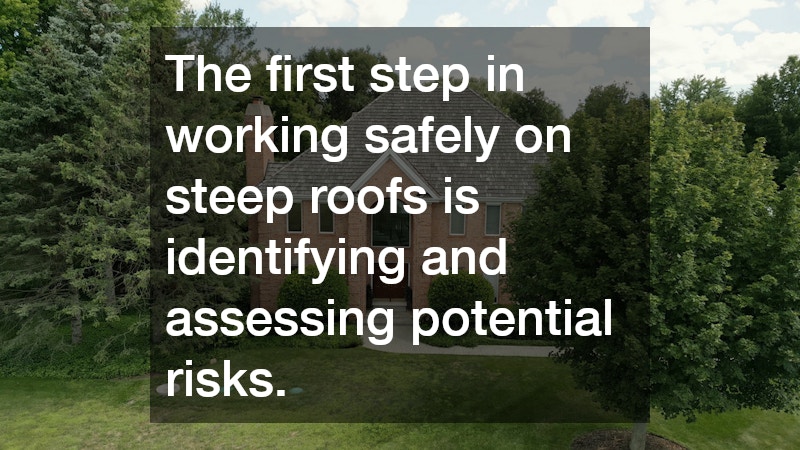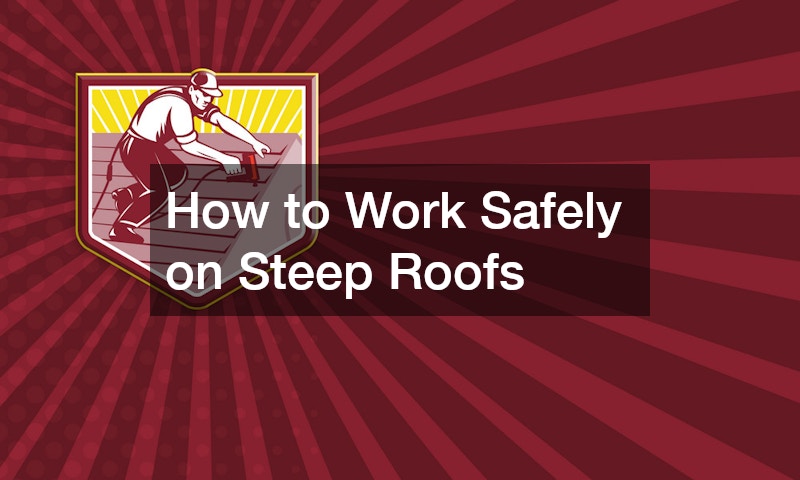Working on steep roofs poses unique challenges and dangers. Ensuring safety requires proper preparation, the right equipment, and knowledge of efficient techniques. Whether you’re a homeowner looking to do repairs or a professional roofer, adhering to safety protocols is crucial in preventing accidents.
Identify and Assess Risks
The first step in working safely on steep roofs is identifying and assessing potential risks. Recognizing the hazards associated with steep roofs includes considering factors such as the roof’s pitch, weather conditions, and the type of roofing materials being used.
High winds, rain, and even excessive heat can increase the risk of slips and falls, making it essential to plan work around these conditions. A professional roofing company often conducts a thorough risk assessment before beginning any project, laying the groundwork for safe work practices. This step ensures that safety measures are tailored to the project’s specific needs and conditions.
Every roofing job should start with a comprehensive analysis of the working environment. Consider the roof’s structural integrity, the presence of skylights or vents, and the proximity of power lines as part of the assessment process. The goal is to pinpoint potential hazards so that appropriate measures can be put in place to mitigate them. Using the experience and insights of a qualified roofing company can significantly enhance the accuracy of this assessment. Attention to detail at this stage often determines the overall safety and efficiency of the roofing task.
Once risks are identified, creating a safety plan specific to the task at hand is essential. This plan should include steps to control or eliminate identified risks, prioritize tasks based on their danger levels, and ensure all workers are equipped with safety gear. Many roofing companies provide extensive training to their workers, emphasizing the importance of safety plans and adherence to them at all times. It’s not just about knowing the risks but actively planning and preparing to tackle them effectively. A robust safety strategy can reduce the likelihood of accidents and make steep roof work safer for everyone involved.
Utilize Proper Safety Equipment
Proper safety equipment is the cornerstone of any safe roofing endeavor, particularly on steep slopes. A full body harness connected to an anchor point is vital to prevent serious falls. These harnesses distribute impact force, offering protection even if a slip does occur. Additionally, the use of non-slip footwear enhances grip, reducing the risk of slips and falls significantly. Investing in quality safety equipment should be a priority for any roofing company aiming to promote safety and professionalism.
Besides harnesses, securing ladders properly is crucial when accessing steep roofs. Ladder stability can be ensured by placing them at a suitable angle and securing them at the top and bottom. Using ladder stabilizers can further prevent movement during use. Moreover, roofing companies frequently use guardrails on roofs they work on, which act as additional safety barriers around edges. These precautions collectively form a multilayered safety system that enhances the security and safety of roof workers.
Furthermore, regular checks and maintenance of safety equipment can never be underestimated. It’s essential to inspect equipment for wear and tear before each use, as even the slightest defect can lead to failure. Many roofing companies make it a policy to document these inspections and replace equipment regularly to maintain a high safety standard. This meticulous attention to equipment maintenance ensures reliability, offering peace of mind to anyone working at height. Ultimately, consistently using and maintaining the right equipment can be the difference between a safe job and a dangerous one.
Training and Safe Work Practices
Comprehensive training is a valuable tool for ensuring safety when working on steep roofs. The training should encompass the correct use of equipment, recognizing potential dangers, and methods for safe material handling. Knowing the limitations of one’s skills and when to seek professional help is also a part of effective training. Many roofing companies have ongoing training programs that keep their workers updated on the latest safety standards and techniques. This commitment to education is indicative of a serious approach to safety and professionalism in the roofing industry.
Safe work practices extend beyond initial training and should be reinforced through regular safety meetings and refreshers. Discussing recent work incidents or near misses as learning points can prepare workers for future challenges. Emphasizing the importance of teamwork and communication on the roof can further enhance safety as workers are encouraged to look out for one another. By developing a culture of openness and safety within a roofing company, workers feel empowered to raise concerns without fear of reprisal. This culture not only builds trust but also contributes significantly to creating a safer working environment.
Finally, adhering to safe work practices should be a constant, daily habit. It involves a commitment to consistently following all safety protocols and procedures, regardless of how routine a task might seem. Such practices are embedded in every aspect of the work process, from initial setup to task completion. They ensure that all members of the team understand their roles and responsibilities clearly, promoting a cohesive and safe working environment. In the end, a disciplined approach to safety practices benefits not only the workers but also the customers and the reputation of the roofing company.

